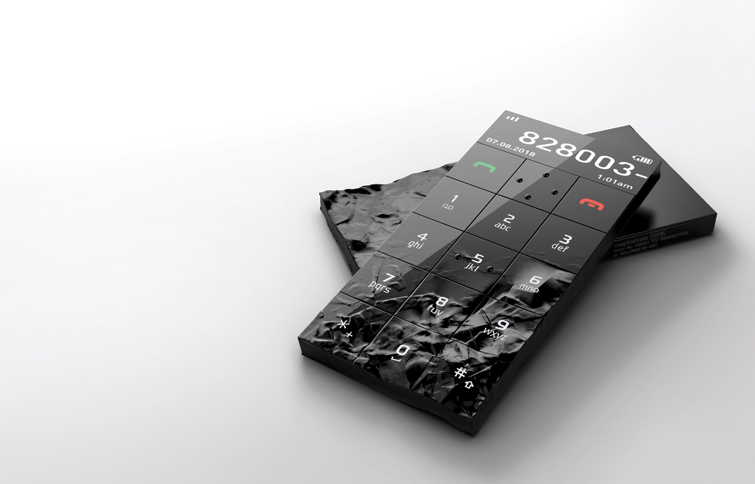Why is it when we look at leather, and wood, and metal, they have a characteristic common to all of them. they have a character that grows and ages with time
In our even more connected world, there's a resurgence of the craft and natural, in an age where value in life is becoming ethereal in data, we hold onto these crafted items, made individually by hand, who have value in the effort in them. But why do we value them?
This goes back even as far as the dawn of the Industrial Age, with John Ruskin's view on art and nature, and his influence on the Arts and Crafts Movement
The discussion between manufactured and artisan has always been one of dichotomy, Mass production has led to consistency of a product. The same experience of a pair of plastic handled scissors is the same all across the world , the same ergonomics, tolerances, and use. But there is no soul, compared to the individual character that one's favorite leather bag takes on, or the way a tool handle burnishes and ages, there's an extra layer of meaning that grows because of the materiality of the natural material.
With the advent of new materials and manufacturing processes, I believe there is an opportunity to again experiment and fuse the laws of the natural world, with those of our modern manufacturing processes. Bio plastics and naturally sourced resins are new exciting sources. The proliferation of inexpensive connected sensors will add a new layer of meaning and redefinition of materials from passive to reactive
This writing will explore design guidelines that I've observed in working with natural materials, which may help guide and point ways forward in this new hybrid materiality:
Perfect Imperfection
Think of a piece of leather, or tree bark. No two areas are the same but they are bound by a regularity, that of the mathematics and principles of nature, the golden ratio, fractals, hierarchical molecular structures. Yet we think none of those things, we instinctively find beauty in them.
In the study of music, researchers discovered it's the tiny minor variations in music performed live that brings the pleasure to the listener. Milliseconds of variance from the perfect tempo, that striving for perfection, is what people appreciate. The British Tech DJ BT brought this to life in his manually input beat tracks. where does this pleasure come from?
The human sensory system is a complicated and massive data input machine. The retina is able to input 10 million bits of information per second. In to keep us from being overwhelmed, only the most important information], one tiny fraction is funneled and brought from the subconscious into our conscious minds.
Perhaps appreciation for the complexity and algorithmic beauty of natural materials is processed by the subconscious mind.
There have been attempts to bring in natural irregularity into the manufacturing process, and they are worthy in the attempt. Take for example the Egg vase by Mooi
Though we consciously appreciate the effort and philosophy, The mathematics of it, is too plain on the surface to be appreciated subconsciously. These rules are complex and subtle.
but I think more opportunities will rise with the further exploration of data visualization techniques. These attempt to pull out or mimic the core algorithms of nature, and succeed in reinterpreting it.
Design firm nonobject's provocative concept , "rawphisticated phone" is asking similar questions about the meaning of surface in interfaces
Imagine a texture for a cloth material, based on your sleep patterns for the past two yeras, what would that look like? There would be a pattern, but not wholly obvious.
"Nature follows underlying laws of pattern and algorithm , and so new materials must be based on similar laws that are just as complex and subtle"
To repeat the theme, but not clone it outright from piece to piece, I think is the general idea.
Intentional transformation
When we cut and form that raw piece of wood, or tan that piece of raw leather, we do something to it, we bring it under our own power and expose and highlight a certain element. When we tan a piece of buffalo hide, we accentuate it marbling and pebbling, when a piece of rare wood is cut with the grain, we see the sensual patterning, and find delight in an unexpected whorl or twist to that grain pattern.
I think here, the idea of perfect imperfection applies, to the processes of making by hand. Every stitch of a well made bag, is regular because of the machine, but made ever so slightly irregular due to the skill of the seamstress. But again, the irregularity is not overtly or consciously noted, if we did see a missed stitch, we would want a refund. The appreciation here again comes from the that almost perfect execution that we subconsciously filter.
"There is a quality of human effort that nears perfection that is enjoyable aesthetically"
Aging and Character
Take for example, this bag from the Superior labor, Over time, the straps will patina and brown, especially with the handle, the painted edges will get scuffed and dog eared, and the tone of the canvas will weather with the sun. The way it ages, is honest and clear
The mass manufactured objects we use today do not have that same quality of permeability and sensibility of aging. When we scratch the corner of our phone, the scratch is bare and rough. In contrast. when we scuff the corner of a piece of leather, it too becomes marred, but it heals itself over time, absorbing the imperfection and making it part of its overall character.
"Absorb imperfections put on through use and the environment and make it part of it's character"
LG has done something interesting in it's flex phone, with its self healing backing, but I think something can be pushed further to not only heal, but to leave a trace of character behind.
One possible way is to question gloss coatings. they are the landmark of new and shiny and pretty and industrially mass produced, but they also are the most vulnerable surface, one scratch ruins the effect.
The Quality of life
I think these base materials, like wood and leather , and to a degree metals have not only a heritage of being the first materials, but they have the quality of having come from life and the earth. The perceived number of steps from raw material to applied use is are fewer and more directly understood. They were once living, harvested, cut, and treated and now to be put to useful purpose. The material isn't abstracted too far from the original source, A piece of walnut furniture will retain the qualities of color, density, and grain, as the original. Its the quality of maintaining the essence of life from that original state, that gives us the adjectives we apply to these materials. Wood is warm, leather is luxurious and supple, metal is earthy and dense.
(This explains why some sustainable products hit it too literally on the nose by making things out of bamboo. It's not a critique on sustainable)
Plastics and petroleum based products don't have the same perceived value, they are extracted from the earth, forcefully and to our knowledge at the detriment to the environment. They undergo unknowable processes and chemical transitions, to finally turn into a pelleted form which is melted into whatever purpose we desire. So many unknowable steps that the material is alien, cold, disconnected from its source.
Take it even a step further. I know I fantasize, but imagine genetic engineering that could have plants actually grow base bioplastic pellets. It would have many fewer steps, and we can imagine these pellets harvested and then purified and sorted in a handful of steps (like grain). A crop of polymers, the analogy would hold.
It's an issue of message and framework. Currently, Bio derived polymers from plants are an exciting new direction, but they are just a material source switch, the way we manufacture, use, and dispose of them still exists in a broken system that is unsustainable. Bioplastics are great on the front end, but if we still put them in the landfill, we are hitting a dead end.
These are just musings I've had for a while on materials and what they mean to me. I'll write more as they come. Thoughts, comments, suggestions? Please let me know below.









